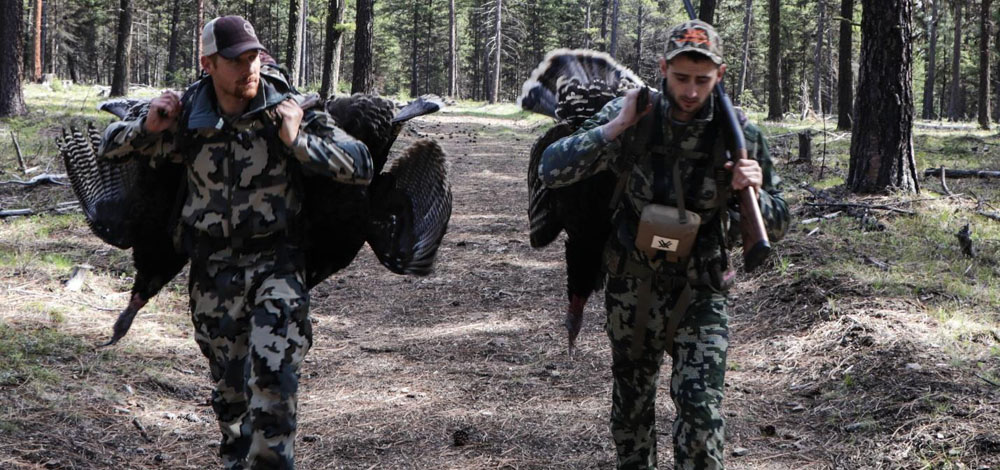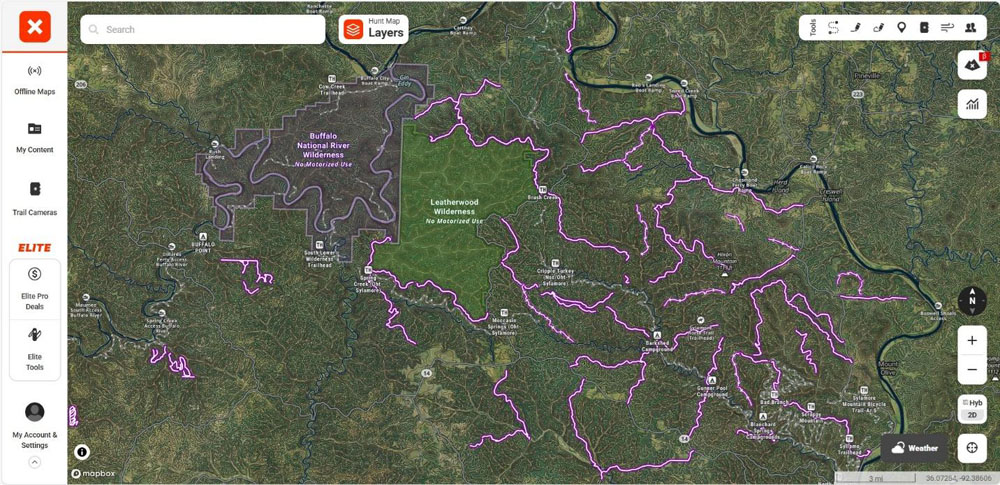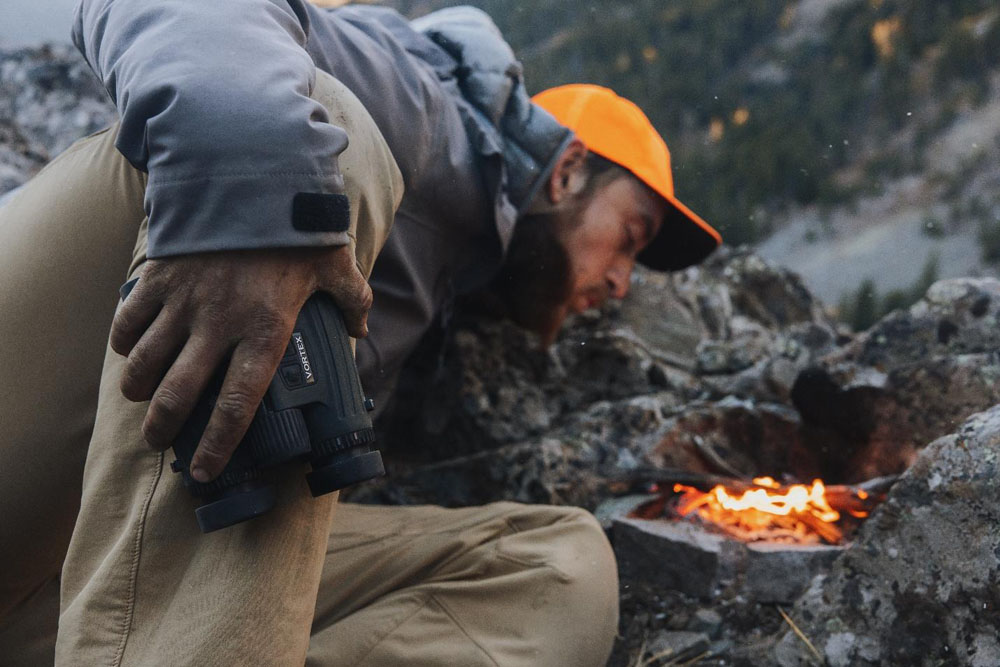Backcountry Birds
As winter rounds its last corner and spring is finally in sight, many hunters have turned their attention from big game, waterfowl and predator hunting to spring trout seasons, bass fishing and turkey hunting.
As with all North American outdoor pursuits, turkey hunting has become more popular and more commoditized. Some landowners have recognized the value of leasing instead of granting permission, and there seems to be a truck (or six) at every public land access point.
That begs the question: Without spending the money on a lease or a hunting club membership, what opportunities are there for hunters looking to pursue low-pressure thunder chickens?
If you’re relatively fit and have the ambition to explore, consider the possibility of a backcountry turkey hunt.
Almost Anywhere
Not every state has designated wilderness tracts, but all states – or nearly all – have public parcels large enough that most hunters wouldn’t bother hiking the whole way through.
Wild turkeys inhabit 48 states. It’s generally accepted that Alaska and Hawaii don’t have native wild turkey populations. So, if you live in one of the other 48 states, there’s an opportunity to ditch the crowds, find some birds, and have an adventure without leaving your state.
Think of a backcountry turkey hunt like a backpack elk hunt. Pack a tent, park the truck, and head into the woods with a plan to spend a long weekend in the woods before returning to the truck. Pack your gear accordingly.
Once you’ve committed to hiking off-trail and spending more than a morning or evening in the woods, you’ve extended your range beyond what 99 percent of other turkey hunters are willing to do.

Sometimes, boot leather and a backpack can put you in turkeys that other hunters aren’t even aware exist.
Finding the Right Spot
Again, there are a lot of similarities between backpack archery elk hunting and backcountry turkey hunting. You’re mobile, you’re listening for birds, you’re looking for fresh track and scat, and you have camp on your back. Another similarity may be that you’ll have to spend a little time on the computer to identify a good place to start.
You already know what kind of terrain features and resources wild turkeys are drawn to. With that information, search your state for pieces of public property with minimal vehicle access. Find areas that are a mile or more from a drivable road.
First, think like a turkey: “Where would I be if I was a gobbler with hens.”
Then, think like the average turkey hunter: “What areas are within easy morning access of my pickup truck?”
Find where the birds are likely to be, and the hunters are not. The best way to do that is to be willing to hike farther than the next guy. Be so willing to hike that you don’t have any plans to return to the truck at the end of the day.
In fact, the goal is to be so far from the truck at the end of the first day that you can’t go back in reasonable time. That’s OK, though. Because you’ll have camp on your back.
Public land parcels this large might not exist in your county, but odds are they do exist in your state. It’s up to you to find them and put forth the effort needed to get there.

Use online mapping services as a powerful resource
Other Advantages
Camping miles from your truck for a turkey hunt has some pretty clear advantages.
You won’t have other hunters coming to your call, and you won’t hear other hunters calling. Turkeys that rarely hear a call are less call shy. Nobody will beat you to your spot, and they won’t bump your birds in the roost as they shuffle into the woods at dawn.
But there are other advantages, too. If you’re camped in the backcountry, you’ll already be in position to hear birds roost in the evening and fly down in the morning.
Prepping and Packing
If you’ve never hunted multiple days out of a backpack, it’s not difficult or complicated. It’s just important to take everything you need, without packing too much. Why carry more weight than you need to?
For a three-day backcountry turkey hunt, an internal frame pack of roughly 4,000 cubic inches should suffice. The following is a good gear list to start:
- First aid and land navigation
A first aid kit is always a must. Take what you feel comfortable carrying. A mobile ap like OnX or GoHunt will be a tremendous help in navigating, but as with all electronics, only trust them so far. Find a detailed physical map of the area and carry (and know how to use) a compass. A portable, rechargeable power pack to replenish your phone is a good idea, too.
If there’s any chance that you’ll be out of cell reception, be sure that you have offline-maps saved to your mobile device. It’s also best to account for emergency communication if you won’t have consistent cell service. If you don’t have one of the new iPhones that sends and receives texts via satellite, it’s wise to purchase a Garmin inReach. Don’t find yourself in a situation where you can’t communicate in an emergency.
Tell someone where you’re going and update them if plans change. Make sure they know when you plan to return and let them know when you get back to your vehicle.
Trekking poles aren’t a bad idea either, if the area you plan to hunt has any considerable elevation gain or loss.
- Food and water
Be prepared to carry two liters of water and have two ways of purifying that water. Typically, relying on a high-quality filter system is a good start, but back that up with iodine tablets in case you lose or break the filter. Mark on the map where you intend to find water.
Depending on how much you plan to hike and how much you eat on a regular basis, you should carry 2500 to 3000 calories per day. Take two dehydrated meals per day, made by a brand like Peak Refuel or Mountain House. Use jerky, trail mix, and snack bars to supplement those meals.
It goes without saying that you’ll need a means to rehydrate your meals. A titanium stove is a must. Jetboil makes two fantastic, packable stove options, called Flash and Zip.

Don’t be afraid to make a campfire. It won’t scare the birds.
- Clothing
Most people pack too much clothes into the mountains. It takes up a lot of space. Packing the right things will help you avoid taking too much.
High quality raingear is a must. The rest of the clothes you pack are useless if you can’t keep them dry. It’s also important to have a rain cover for your pack.
A puffy (down) coat is a life-saving piece of equipment. Even if you’re in the South, always take a puffy coat. They weigh next to nothing and they pack down small.
Pack base and mid-layers as needed. If you’re in a wet climate, it doesn’t hurt to have at least one pair of woolen socks per day. Speaking of feet, make sure that the boots you plan to wear are waterproof and up to the task. If they make you uncomfortable after hiking two miles, they’ll be painful after 10 miles.
Consider wearing a pair of gaiters. They keep your lower pant legs dry in damp undergrowth, but they’re also good at keeping ticks out of your pants, especially if duct taped tight around your boots.
- Camping gear
Keep camp simple. You need a tent, sleeping bag, and an ultralight sleeping mat. Down sleeping bags are ideal because they’re light and pack tighter than any synthetic fill sleeping bag. Take as small a tent as possible, as long as it’s quality.
If you’re going to splurge, do it on your sleeping mat. Hiking and hunting are a lot less enjoyable when you’re tired, and the best way to get a good night’s sleep in a tent is to use a quality sleeping mat. Therm-A-Rest has some great options.
Finally, take 20 or 30 feet of paracord. You never know when it’ll come in handy. Aside from that, be sure to pack all your usual turkey hunting gear.
A set of Crocks can be a luxury in camp, but they’re also fantastic if you need to cross a creek deeper than a few inches.
Mobility and Creativity
As you plan your hunt, remember that sometimes it requires a little creativity to escape hunting pressure. Will a landowner allow you to cross their property to get onto public land? If so, you might be able to save yourself miles of hiking. Can you use a boat or canoe to access an otherwise difficult-to-reach parcel?
Think outside the box. The idea is to put in more effort than your competition.
The beauty of hunting “farther in” than the competition is that everything in the backcountry is yours to hunt. Don’t simply hike six miles to limit yourself to a square mile of property. You packed a simple camp so that you can move easily.
If birds aren’t talking where you dopped camp, pack it up and move another mile or two. Find the birds. You’re mobile. Hunt like it.